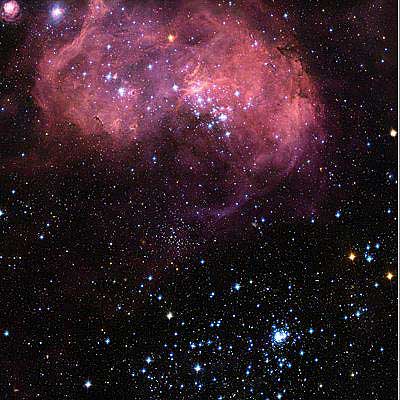
N11 is a vigorously active star formation region
The Large Magellanic Cloud contains many bright bubbles of glowing gas. One of the largest and most spectacular is LHA 120-N 11, from the catalogue compiled in 1956 by the late astronomer and astronaut Karl Henize. It is informally known as N11.
Close up, N11’s billowing pink clouds of glowing gas resemble a puffy swirl of fairground candyfloss. From further away, its distinctive overall shape led some observers to nickname it the Bean Nebula. The dramatic and colourful features in the nebula are the telltale signs of star birth.
N11 is a well-studied region that extends across 1000 light-years. It is the second largest star-forming region within the Large Magellanic Cloud and has produced some of the most massive stars known.
It is the process of star birth that gives N11 its distinctive look. Three successive generations of stars, each of which formed further away from the centre of the nebula than the last, have created shells of gas and dust. These shells were blown away from the newborn stars in the turmoil of their energetic birth and early life, creating the ring shapes so prominent in this image.
Beans are not the only terrestrial shapes to be found in this spectacular high-resolution image from Hubble. At upper left is the red bloom of nebula LHA 120-N 11A. Its roseate petals of gas and dust are illuminated from within, thanks to the radiation from the massive hot stars at its centre. N11A is relatively compact and dense and is the site of the most recent burst of star development in the region.

